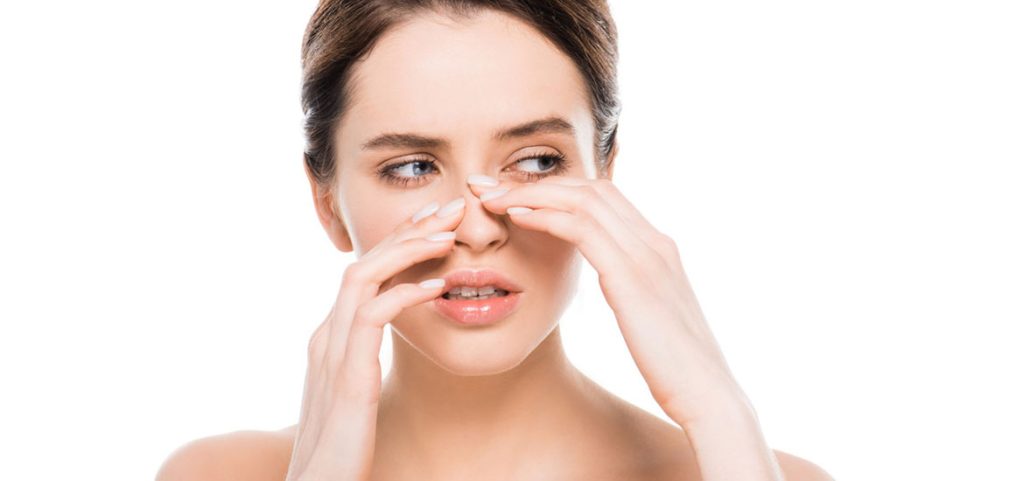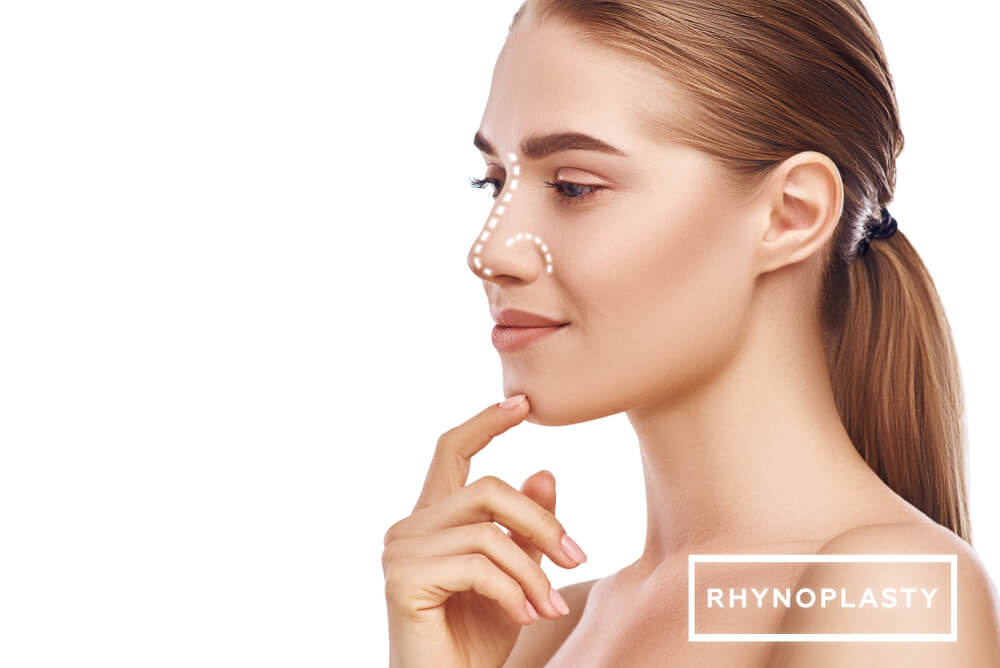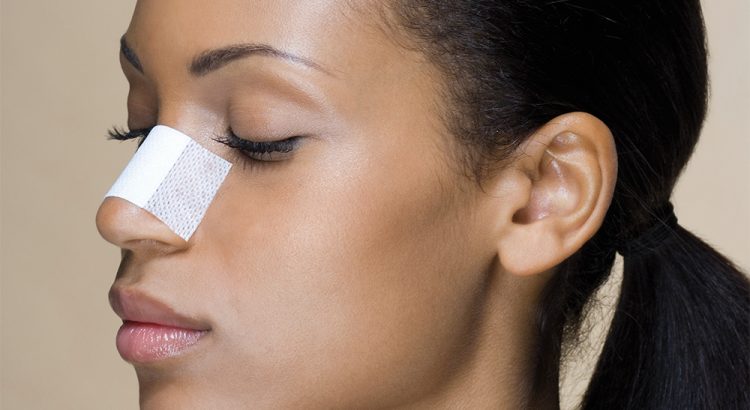Contents;
Benefits of Rhinoplasty Surgery : Improved Nasal Aesthetics

Rhinoplasty surgery, commonly known as a nose job, is a popular cosmetic procedure that aims to enhance the aesthetics of the nose. It can be performed for various reasons, such as correcting a crooked nose, reducing the size of a large nose, or refining the shape of the nasal tip. The procedure is tailored to each individual, taking into account their unique facial features and desired outcome.
One of the main goals of rhinoplasty surgery is to improve nasal aesthetics. This can be achieved by addressing specific concerns that a person may have about their nose. For example, if someone feels their nose is too wide, the surgeon can perform a procedure called nasal reduction to create a narrower appearance. On the other hand, if someone desires a more defined nasal tip, the surgeon can utilize techniques such as tip refinement or cartilage grafting to achieve the desired outcome.
Rhinoplasty surgery not only enhances the aesthetics of the nose but can also have a positive impact on the overall facial symmetry. The nose is an essential feature of the face, and any imbalances or asymmetries can greatly affect the overall harmony of one’s facial features. Through rhinoplasty, the surgeon can address structural irregularities and bring the nose into better alignment with the rest of the face, resulting in enhanced overall facial symmetry.
Enhanced Facial Symmetry

Rhinoplasty surgery is a popular cosmetic procedure sought by individuals who wish to improve the appearance of their nose and achieve enhanced facial symmetry. This surgical procedure aims to address and correct any asymmetry or irregularities in the structure of the nose, ultimately creating a more balanced and harmonious facial profile.
During a rhinoplasty procedure, the surgeon carefully evaluates the patient’s facial features and discusses their aesthetic goals. The surgery involves altering the nasal bone, cartilage, and soft tissues to achieve the desired outcome. By reshaping and refining the nose, the surgeon can correct any deviations, bumps, or irregularities that may disrupt the overall facial symmetry.
Improved facial symmetry not only enhances the appearance of the nose but also has a significant impact on the overall facial aesthetics. When the nose is in proportion to the other facial features, it can create a more balanced and pleasing appearance. A well-proportioned nose can help enhance the symmetry of the eyes, lips, and cheekbones, resulting in a more harmonious facial appearance.
Correction Of Structural Abnormalities

Correction of structural abnormalities is one of the major benefits of rhinoplasty surgery. Rhinoplasty, commonly known as a nose job, is a surgical procedure aimed at improving the shape, size, and overall appearance of the nose. However, it is not only cosmetic reasons that drive individuals to undergo this procedure. There are cases where individuals have structural abnormalities in their nasal passages, which can lead to breathing difficulties and other health issues.
Structural abnormalities in the nose can occur due to various reasons, such as genetic factors, trauma, or previous surgeries. These abnormalities may include a deviated septum, enlarged turbinates, or nasal valve collapse. The deviated septum is the most common structural abnormality, where the wall separating the nasal passages is crooked or shifted to one side.
Rhinoplasty surgery can effectively correct these structural abnormalities, improving nasal function and overall quality of life. During the procedure, the surgeon carefully reshapes and realigns the nasal structures to restore proper symmetry and function. For instance, in the case of a deviated septum, the surgeon may straighten the septum and remove any excess tissue or bone that might be causing obstruction.
Improved Nasal Function

Rhinoplasty surgery, also known as a nose job, is a cosmetic procedure that aims to improve the appearance and function of the nose. While many people may be familiar with the cosmetic benefits of rhinoplasty, such as improved nasal aesthetics and enhanced facial symmetry, it’s important to highlight the significant role it plays in improving nasal function as well.
One of the main reasons individuals seek rhinoplasty surgery is to address functional issues with their nose. Structural abnormalities, such as a deviated septum or enlarged turbinates, can cause breathing difficulties and impede airflow through the nasal passages. These issues not only affect the individual’s ability to breathe properly but can also lead to chronic sinus problems, snoring, and disrupted sleep patterns.
By undergoing rhinoplasty to correct structural abnormalities, individuals can experience improved nasal function. The surgeon can reposition or reshape the nasal structures, including the septum and turbinates, to restore proper breathing. This can make a significant difference in the individual’s overall quality of life, as they will no longer have to struggle with breathing difficulties on a daily basis.
Boost In Self-Confidence

Rhinoplasty surgery can have a significant impact on an individual’s self-confidence. Many people are dissatisfied with the appearance of their nose, and this dissatisfaction can affect their overall self-esteem and confidence levels. By undergoing rhinoplasty surgery, individuals can achieve the desired nasal aesthetics they have always wanted, resulting in a boost in self-confidence.
One of the main reasons why rhinoplasty surgery can enhance self-confidence is by improving nasal aesthetics. Whether it is a misshapen nose, a bump on the bridge, or a crooked nasal structure, rhinoplasty can address these concerns and create a more harmonious and attractive facial appearance. The procedure can also help to achieve facial symmetry, which is essential for overall facial balance.
In addition to improving nasal aesthetics, rhinoplasty can also correct structural abnormalities. Some individuals may have structural issues with their nose, such as a deviated septum or nasal valve collapse, which can not only affect the appearance of the nose but also disrupt normal nasal function. By correcting these structural abnormalities through rhinoplasty surgery, individuals can experience improved nasal function and breathing.
Reduced Breathing Difficulties

Rhinoplasty surgery is a popular cosmetic procedure that is generally associated with improving the aesthetic appearance of the nose. However, there are many other benefits that individuals can experience after undergoing rhinoplasty, one of which is the reduction of breathing difficulties.
Many people experience breathing difficulties as a result of various nasal issues, such as a deviated septum, nasal valve collapse, or enlarged turbinates. These structural abnormalities can significantly impact a person’s ability to breathe properly. Fortunately, rhinoplasty can effectively correct these issues and provide relief from breathing problems.
During a rhinoplasty procedure, the surgeon can modify the nasal structures to improve airflow and alleviate any obstructions. For instance, if a person has a deviated septum, the surgeon can straighten it, allowing for better air passage through the nostrils. Similarly, if the nasal valves are collapsing, the surgeon can reinforce them to prevent collapse and enhance breathing.
- Rhinoplasty can also address other factors that may contribute to breathing difficulties, such as nasal congestion or allergies. The surgeon can optimize the internal nasal passages to minimize congestion and improve airflow. Additionally, if the person has chronic allergies, the surgeon may recommend additional procedures like turbinate reduction or sinus surgery to further alleviate breathing difficulties.
| Benefits of Rhinoplasty for Reduced Breathing Difficulties: |
|---|
| Improved Nasal Airflow: Rhinoplasty can enhance the nasal airflow by correcting structural abnormalities and optimizing the internal nasal passages. |
| Relief from Obstructions: Individuals with a deviated septum or collapsing nasal valves can experience significant relief from breathing obstructions after rhinoplasty. |
| Reduced Nasal Congestion: Rhinoplasty can help minimize nasal congestion, making breathing easier and more comfortable. |
| Improved Quality of Life: By addressing breathing difficulties, rhinoplasty can positively impact an individual’s quality of life, allowing them to breathe more effortlessly and comfortably. |
Enhanced Quality Of Life

Rhinoplasty surgery is a cosmetic procedure that not only improves the appearance of the nose but can also have a significant impact on a person’s quality of life. When the nose is out of proportion or has structural abnormalities, it can affect how a person feels about their appearance and how they interact with others. By correcting these issues, rhinoplasty surgery can enhance a person’s self-esteem and confidence, leading to an improved quality of life.
Rhinoplasty surgery can not only address aesthetic concerns but also correct functional problems that may hinder breathing. Structural abnormalities such as a deviated septum or collapsed nasal valves can cause breathing difficulties and impact daily activities. By correcting these issues, rhinoplasty surgery can improve nasal function and reduce breathing difficulties. This can lead to better sleep, increased energy levels, and an overall improvement in quality of life.
Furthermore, the benefits of rhinoplasty surgery extend beyond physical appearance and functionality. Many individuals who undergo rhinoplasty report an increase in self-confidence and improved social interactions. When a person feels good about their appearance, they are more likely to engage in social activities and form meaningful connections with others. This newfound confidence can have a positive ripple effect on various aspects of life, including personal relationships, career opportunities, and overall mental well-being.
Frequently Asked Questions
1. How can nasal aesthetics be improved?
Nasal aesthetics can be improved through rhinoplasty, also known as a nose job, which involves reshaping the nose to enhance its appearance.
2. Can nasal surgery improve facial symmetry?
Yes, nasal surgery can improve facial symmetry by correcting any asymmetries or imbalances in the nose, which can contribute to a more symmetrical overall facial appearance.
3. What structural abnormalities can be corrected through nasal surgery?
Nasal surgery can correct a variety of structural abnormalities, such as a deviated septum, nasal valve collapse, or nasal polyps, which can improve nasal function and overall breathing ability.
4. How does nasal surgery improve nasal function?
Nasal surgery can improve nasal function by addressing structural issues that may be obstructing the nasal passages, such as a deviated septum or nasal valve collapse, allowing for improved airflow and reduced breathing difficulties.
5. Can nasal surgery boost self-confidence?
Yes, nasal surgery can boost self-confidence by improving the appearance of the nose, which can enhance overall facial harmony and attractiveness, leading to increased self-esteem and confidence.
6. How does nasal surgery reduce breathing difficulties?
Nasal surgery can reduce breathing difficulties by addressing structural abnormalities that may be causing nasal obstruction or difficulty in breathing, allowing for improved airflow and easier breathing.
7. Does nasal surgery improve the quality of life?
Yes, nasal surgery can improve the quality of life by addressing both functional and aesthetic concerns of the nose, resulting in enhanced nasal function, improved facial symmetry, and increased self-confidence, leading to an overall improved quality of life.
